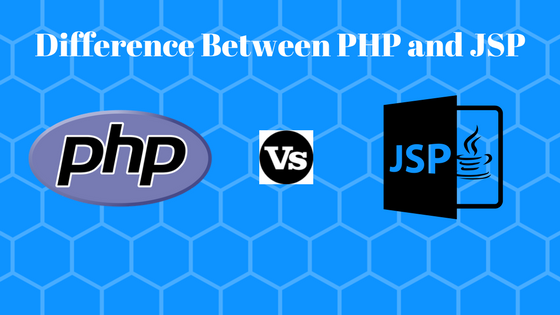PHP is a highly popular and demanding language. Both the PHP and JSP are server-side scripting languages. PHP has brought a revolution in the web development industry. It has changed the entire development scenario by introducing interactivity.
For creating web pages, both they involve HTML source code. These languages are free. They support Unicode encoding. JSP stands for Java Server Pages. PHP stands for Hypertext Processor where “Preprocessor” means that changes happen before the HTML page is created. JSP was developed by Sun Microsystems and PHP developed by the PHP Group.
The dynamic scripting language PHP has become enormously popular for implementing lightweight web applications and is widely used as a server-side scripting language for web servers. Recent market trends show a growing demand of expert and experienced PHP MySQL developers.
Let’s see some differences between JSP and PHP:
- Programming language. JSP uses Java as the base for programming. On the other hand, PHP (Hypertext Preprocessor) is a broadly used as an open-source general-purpose scripting language that is particularly suitable for web development and can be rooted in HTML and it does not need any other programming language.
- Coding. PHP is a programming language that can perform all kinds of things like making convention web content to serve the browser, assess form data sent from a browser and talk to a database. Means PHP is simple and requires fewer lines of code. JSP allows the division of stationary contents from active contents. Means JSP is more complex and requires more code. With JSP, if the code inside a page gets too big, or if you want to use it elsewhere, you can cut it out, make it into a Java class, and invoke it from anywhere in your application (even not from a page). With PHP, you’re stuck inside the HTML box.
- Execution time. PHP takes fast development and less execution time. It gives Immediate feedback and greater productivity. Whereas JSP product development and execution requires more execution time than PHP.
- Interpreter and compiler. JSP – has got both. PHP does not have a compiler but has an interpreter.
- Debugging. JSP products can be debugged by editors. PHP applications are required to have the XDebug debugger installed on your PC, the Apache local web server for PHP development. Otherwise, the print statements are used in PHP for debugging.
- Packaging support. PHP – no support. JSP – support.
- Garbage collection. The performance of Garbage Collection of PHP can be difficult to understand PHP does not support it. In JSP, garbage means unreferenced objects. JSP supports with JVM (Java Virtual Machine).
- Security. JSP has its own security framework. PHP has no security guarantees. There are a number of problems in PHP and sadly not all of them have definite solutions.
- Caching. JSP supports object caching, PHP does not support it.
- File uploading. JSP – no built-in support. A JSP (Java Server Pages) can be used with an HTML form tag to let users upload files to the server. An uploaded file can be a binary, a text file or an image file or any other document. Whereas, with PHP, it is easy to upload files to the server PHP has a built-in web server for file uploading
- APIs. JSP hosting is not much costly than PHP.
- Robustness. JSP – very robust. PHP – less robust.
- Session management. The JSP engine automatically does the right thing with cookies so you have access to the variable on later requests. User sessions are maintained on JSP server. PHP doesn’t have automatic session management. PHP destroys the user sessions every time.
Generally speaking, PHP and JSP performance, the difference cannot be very far away, each with its own advantages. For individuals that do the same WEB system, PHP is relatively easy than JSP, the complexity may be lower.


Leave A Comment